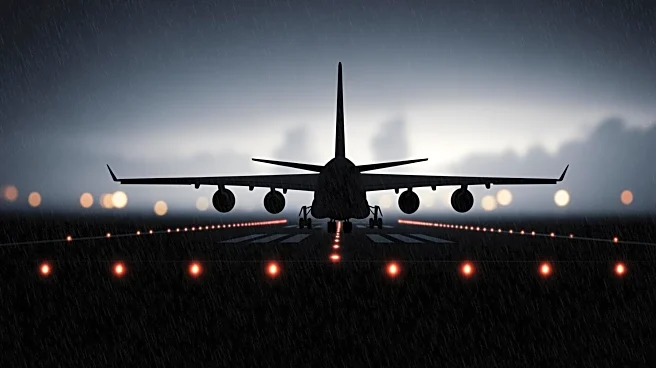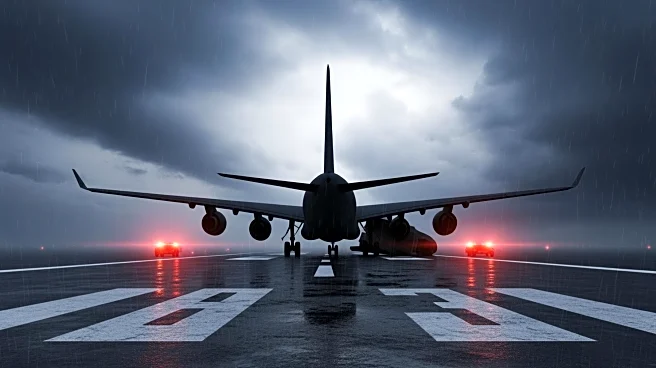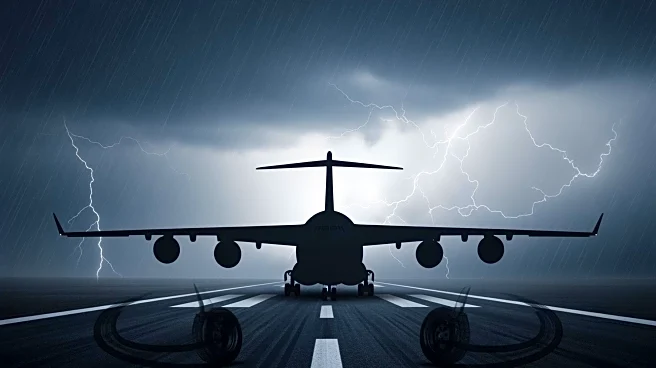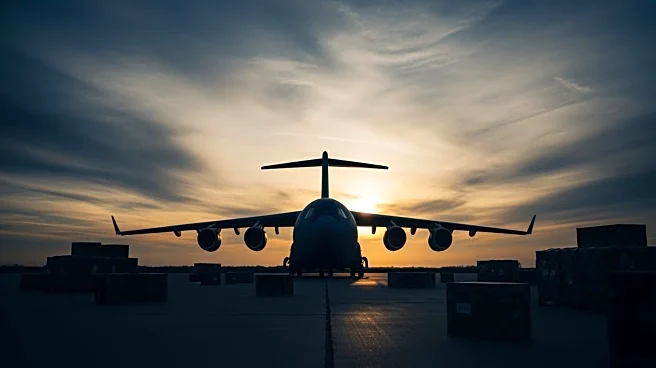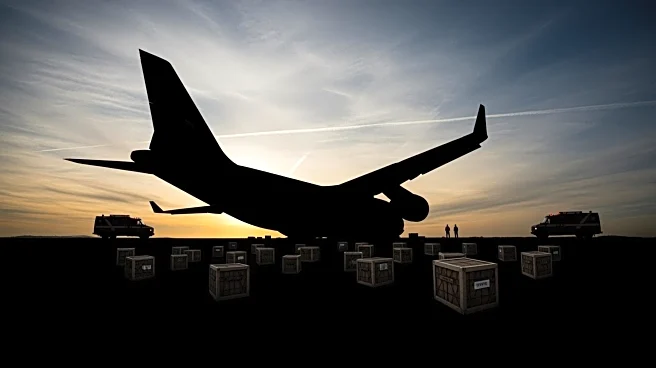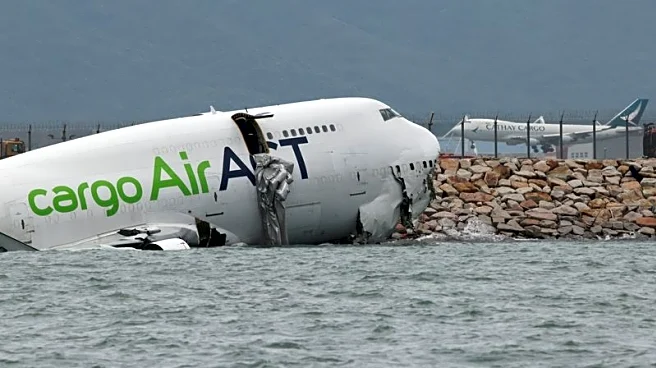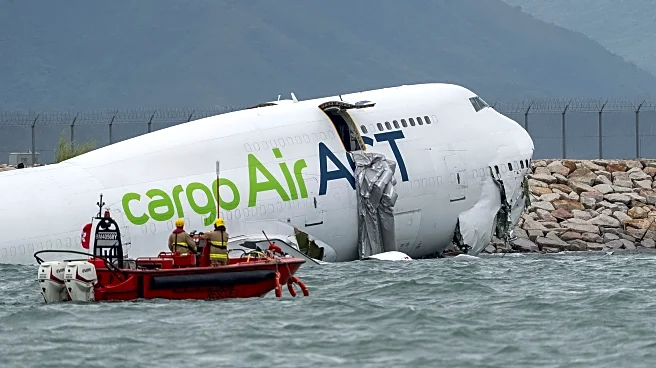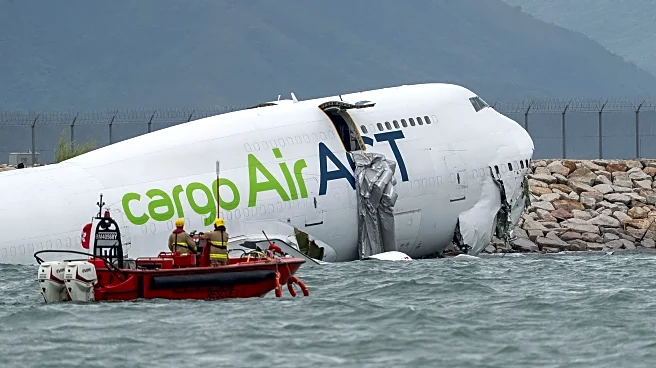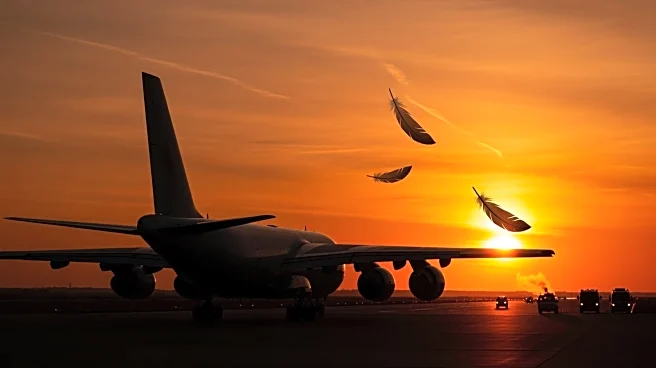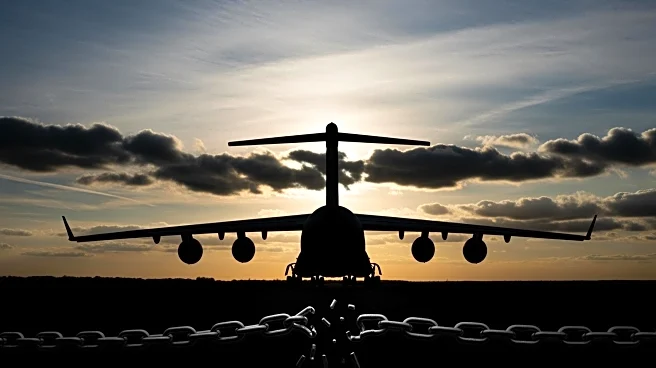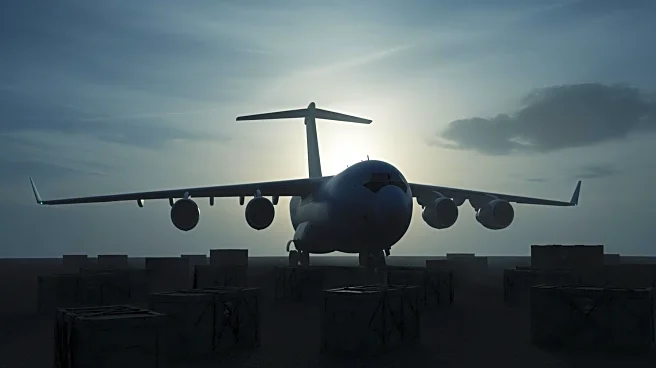What's Happening?
A cargo plane operated by Emirates, under a wet lease from Turkish carrier Act Airlines, skidded off the runway at Hong Kong International Airport and landed in the sea. The incident occurred early on Monday
morning as the plane was arriving from Dubai. The aircraft collided with an airport patrol vehicle, resulting in the deaths of two ground staff members who were in the vehicle. The four crew members on board the plane survived and were rescued. The crash marks one of the deadliest aviation incidents in Hong Kong in recent years. An investigation has been launched to determine the cause of the accident, as the plane did not send out a distress signal during landing.
Why It's Important?
This incident highlights significant safety concerns at one of the world's busiest airports, potentially impacting aviation safety protocols and operational procedures. The deaths of the two ground staff members underscore the risks faced by airport personnel. The investigation's findings could lead to changes in how cargo flights are managed and how ground operations are conducted to prevent similar tragedies. The incident also affects Emirates and Act Airlines, as it raises questions about aircraft maintenance and operational safety standards. The broader aviation industry may see increased scrutiny and regulatory adjustments as a result.
What's Next?
Authorities in Hong Kong have initiated an investigation to understand the circumstances leading to the crash. The focus will be on the plane's landing path and the communication between the aircraft and airport control. The findings could lead to changes in airport safety protocols and operational guidelines. Emirates and Act Airlines may face regulatory reviews and potential legal actions depending on the investigation's outcome. The incident may prompt other airports to reassess their safety measures and emergency response strategies.
Beyond the Headlines
The crash raises questions about the safety of wet lease arrangements, where one airline provides aircraft and crew to another. This practice is common in the aviation industry but can complicate accountability and safety oversight. The incident may lead to a reevaluation of such agreements and their regulatory frameworks. Additionally, the emotional and financial impact on the families of the deceased ground staff is significant, highlighting the human cost of aviation accidents.
